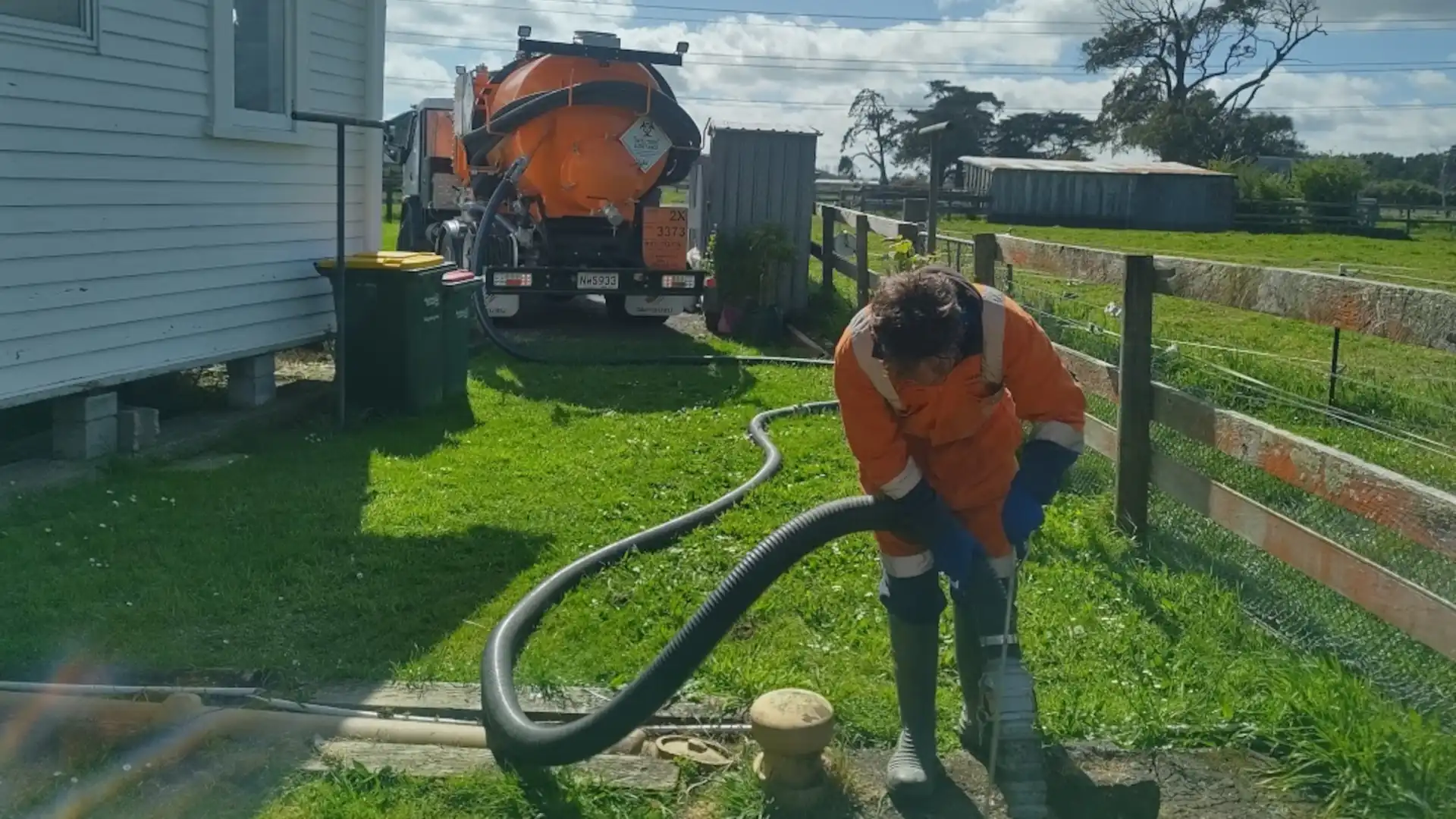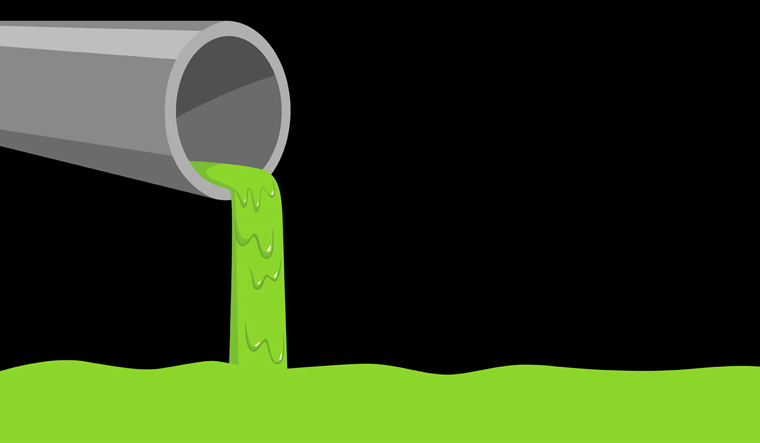Safe and Lasting Liquid Waste Disposal: Your Go-To Provider
Safe and Lasting Liquid Waste Disposal: Your Go-To Provider
Blog Article
How Liquid Garbage Disposal Functions: An In-depth Summary of Methods and Technologies Utilized

Review of Fluid Waste Kind
The complexity of liquid waste types demands a complete understanding of their qualities and implications for disposal. Liquid waste can broadly be classified right into numerous types, including industrial, community, farming, and unsafe waste. Each group displays distinct properties, needing certain management strategies to alleviate ecological and health risks.
Industrial liquid waste stems from manufacturing procedures and usually contains a variety of impurities, such as heavy steels, solvents, and organic substances. Local fluid waste, mainly consisting of wastewater from households and industrial establishments, consists of organic issue, nutrients, and virus (industrial wastewater treatment). Agricultural fluid waste, consisting of overflow from ranches, may have plant foods, pesticides, and pet waste, posing risks to water high quality and environments
Hazardous liquid waste is defined by its poisoning, sensitivity, or possible to create harm. This classification includes substances like acids, bases, and particular chemicals that necessitate rigid handling and disposal procedures. Recognizing these diverse liquid waste kinds is important for creating reliable disposal approaches and making certain compliance with environmental laws. Proper category and characterization are important for applying proper treatment strategies and minimizing the unfavorable influence on public health and the atmosphere.
Physical Therapy Methods

Screening is the preliminary action, where larger bits and particles are eliminated from the fluid waste using screens or grates. In sedimentation tanks, heavier fragments work out at the base, forming a sludge layer, while the made clear fluid can be additional treated.
Purification is an additional essential technique that entails passing the liquid through permeable materials, such as sand or membranes, to catch smaller sized bits. This step boosts the quality of the liquid, making it ideal for subsequent therapy procedures.

Chemical Therapy Techniques
Chemical therapy techniques are important for effectively managing fluid waste, particularly in addressing dissolved and colloidal impurities that physical techniques may not effectively remove. These methods utilize various chemical agents to counteract, speed up, or change dangerous materials right into less hazardous types.
One usual method is coagulation and flocculation, where chemicals such as alum or ferric chloride are contributed to advertise the aggregation of suspended particles. This procedure enhances sedimentation, enabling much easier removal of the resulting sludge. Additionally, oxidation processes, utilizing representatives like chlorine or ozone, are employed to damage down intricate organic compounds and pathogens, rendering the waste much safer for discharge or more treatment.
Neutralization is one more critical technique, which readjusts the pH of acidic or alkaline waste streams to neutral degrees, avoiding prospective damage to downstream systems and the environment. In addition, progressed oxidation procedures (AOPs) utilize combinations of oxidants and ultraviolet light to deteriorate relentless pollutants, accomplishing a higher degree of treatment performance.
Organic Therapy Procedures
Organic treatment procedures play a vital duty in the monitoring of fluid waste by using bacteria to disintegrate raw material and minimize impurity levels. These processes can be generally categorized right into cardiovascular and anaerobic therapies, each using particular microbial neighborhoods to achieve reliable waste degradation.
Aerobic treatment involves the usage of oxygen to assist in the failure of organic materials by germs. This procedure is commonly executed in activated sludge systems, where aeration containers offer a helpful environment for microbial development, causing the oxidation of organic contaminants. The resultant biomass can be divided from dealt with effluent with sedimentation.
In contrast, anaerobic treatment happens in the lack of oxygen, counting on different microorganisms to damage down raw material. This method is particularly helpful for high-strength waste, as it creates biogas, a sustainable energy resource, while minimizing sludge manufacturing. Technologies such as anaerobic digesters are frequently used in metropolitan and industrial applications.
Both aerobic and anaerobic biological treatments not only reduce the ecological impact of liquid waste but also assist in source recovery, making them necessary components of sustainable get more waste monitoring approaches. Their versatility, effectiveness, and efficiency sustain their extensive application throughout various markets.
Arising Technologies in Disposal
Innovative techniques to liquid waste disposal are swiftly evolving, driven by innovations in technology and a raising focus on sustainability. Amongst these emerging innovations, membrane bioreactors (MBRs) have actually obtained traction for their capacity to incorporate biological treatment with membrane filtration, causing high-grade effluent that can be reused in numerous applications. MBRs allow smaller impacts and a lot more reliable procedures compared to conventional systems.
An additional promising advancement is making use of anaerobic digestion integrated with nutrient healing innovations, which not just treats liquid waste but likewise creates biogas and recovers valuable nutrients like nitrogen and phosphorus. This double advantage boosts source effectiveness and decreases environmental influence.
Additionally, advanced oxidation procedures (AOPs) are being embraced for the deterioration of complicated natural toxins. These methods make use of powerful oxidants go to my site and drivers to damage down pollutants at the molecular degree, using a very effective remedy for challenging waste streams.
Additionally, the assimilation of expert system and equipment understanding in waste administration systems is optimizing operational performance and anticipating maintenance, causing lowered costs and improved ecological conformity. These technologies show a considerable shift towards more sustainable and reliable fluid waste disposal practices.
Verdict
In verdict, effective fluid garbage disposal necessitates an extensive understanding of numerous techniques and modern technologies. The assimilation of physical, chemical, and organic therapy techniques makes certain the efficient monitoring of diverse waste types. In addition, the introduction of cutting-edge technologies improves therapy effectiveness and advertises sustainability in waste monitoring techniques. By continuously progressing these approaches, it comes to be possible to deal with the growing difficulties associated with liquid waste, ultimately adding to ecological defense and source healing.
Liquid waste disposal is a crucial facet of ecological monitoring, requiring a thorough top article understanding of various methods and modern technologies customized to different waste kinds. Liquid waste can generally be classified into a number of kinds, consisting of commercial, metropolitan, agricultural, and hazardous waste. Agricultural liquid waste, including drainage from ranches, may contain plant foods, chemicals, and animal waste, positioning risks to water high quality and ecosystems.
Different physical therapy approaches play a vital duty in taking care of liquid waste properly - industrial wastewater treatment.In final thought, effective fluid waste disposal demands a thorough understanding of various methods and technologies
Report this page